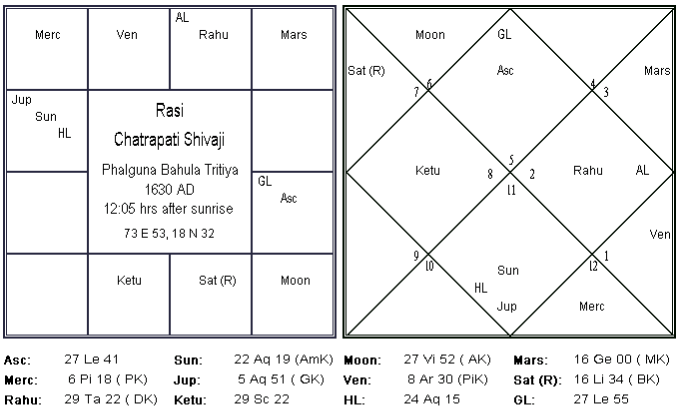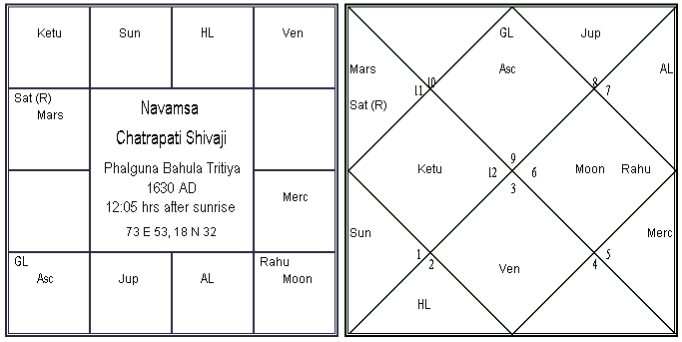Kalpadruma Yoga in Vedic Astrology
Consider (1) lagna lord, (2) his dispositor, (3) the latter’s dispositor in rasi and (4) in navamsa. If all the four planets are all in quadrants, trines or exaltation signs, then this yoga is present. An example will make this clearer. One born with this yoga becomes a king. He likes wars.
This makes the yoga even more powerful. He was indeed a prosperous, principled, strong and kind king ever ready to take on powerful enemies. Even as he was fighting mighty Muslim emperors, he was open-minded and treated all his people equally. He respected every woman as a mother. He stood for every good thing that Hindu culture represented. About 400 years after his birth, name of this “dharma veera” (virtuous warrior) still inspires awe in Indians in general and Maharashtrians in particular.
He is very prosperous, principled, strong and kind. Kalpadruma is a celestial tree of the heaven. This yoga is also known as Paarijaata yoga. Paarijaata is a celestial flower. Some authors have simplified this yoga and wrote that one of the last two planets mentioned can bring the yoga if in a quadrant or a trine or exaltation sign. Taking all the four planets make this a less common yoga, which it ought to be. Let us follow Parasara.
As an example, let us look at the rasi and navamsa charts of Chatrapati Shivaji, a great king of India. Lagna lord is Sun. He is in Aq and his dispositor is Saturn (lord of Aq). Saturn is in Li and his dispositor is Venus. We also need Saturn’s dispositor in navamsa. In navamsa, Saturn is in Aq and his dispositor is Saturn himself.


Thus we get the four planets as — Sun, Saturn, Venus and Saturn. Sun is in a quadrant. Saturn is exalted. Venus is in a trine. Thus Shivaji had Kalpadruma yoga. In navamsa also, Sun is exalted, Saturn is in moolatrikona and Venus is in a lagna. This makes the yoga even more powerful. He was indeed a prosperous, principled, strong and kind king ever ready to take on powerful enemies. Even as he was fighting mighty Muslim emperors, he was open-minded and treated all his people equally. He respected every woman as a mother. He stood for every good thing that Hindu culture represented. About 400 years after his birth, name of this “dharma veera” (virtuous warrior) still inspires awe in Indians in general and Maharashtrians in particular.